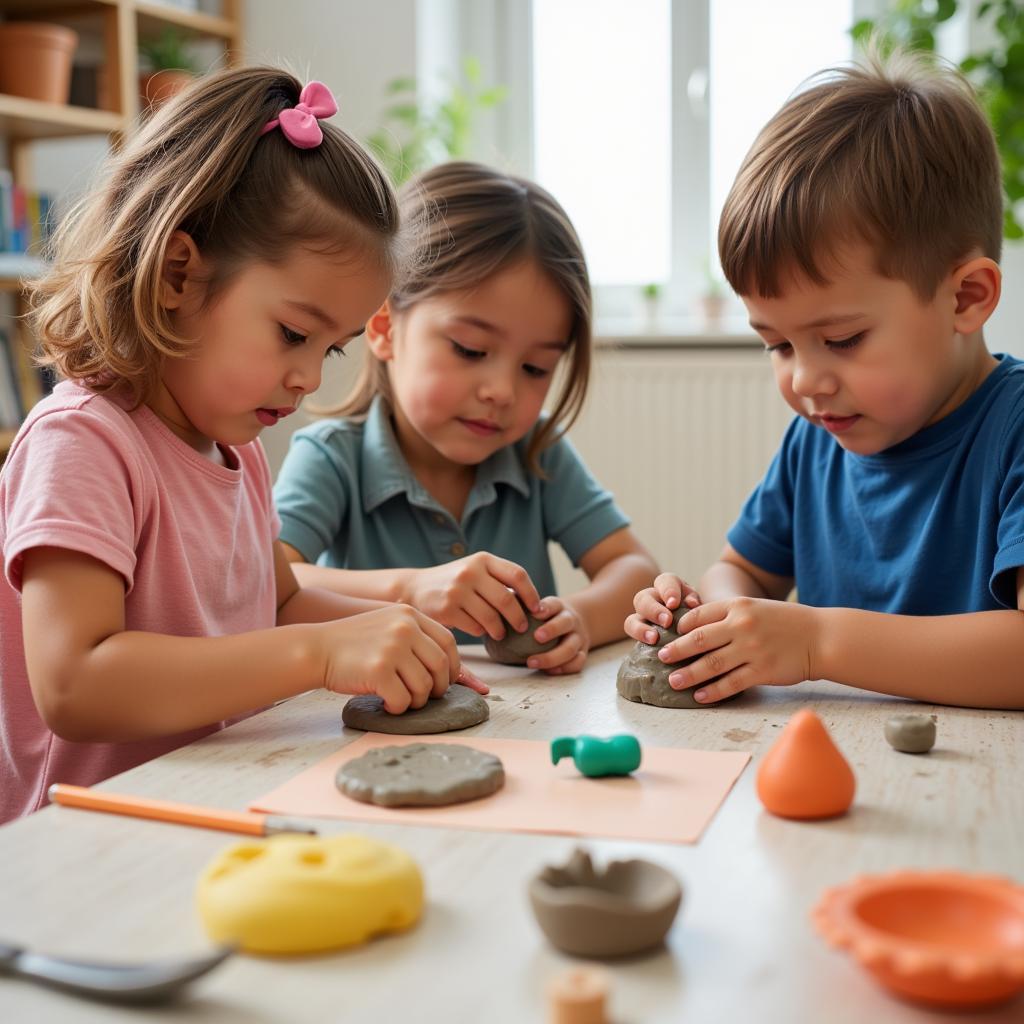Sculpting skills play a vital role in the comprehensive development of both children and adults. Cultivating these skills not only fosters creative thinking but also enhances fine motor skills, dexterity, and patience. writing skills in administrative communication.
The Importance of Sculpting Skills
Sculpting skills are foundational for developing imagination and expressive abilities in children. Through kneading and shaping, children freely express their ideas, emotions, and observations about the world around them. Moreover, this activity helps children develop concentration, perseverance, and problem-solving skills.
 Children engaging in sculpting activities
Children engaging in sculpting activities
Basic Sculpting Techniques
Rolling, Smoothing, Pressing, Flattening Techniques
Basic techniques such as rolling, smoothing, pressing, and flattening are the first steps in getting acquainted with sculpting skills. Mastering these techniques helps children create basic shapes, thereby developing observational skills and fine motor skills.
Joining, Assembling, Attaching Techniques
After mastering the basic techniques, children can learn how to join, assemble, and attach shapes together to create more complex products. This skill requires meticulousness, precision, and spatial thinking abilities. shaping skills for preschoolers.
Applications of Sculpting Skills in Life
Sculpting skills are not only useful in learning and playing but can also be applied in many different areas of life. For example, in art, design, architecture, and even in daily tasks. teaching children skills.
Nguyen Thi Lan, an early childhood education expert, shares: “Cultivating sculpting skills in children from a young age will help them develop comprehensively, not only physically but also mentally and intellectually.”
Developing Sculpting Skills for Children
Choosing Suitable Materials
Choosing materials that are appropriate for the age and ability of children is very important. Modeling clay, flour dough, or natural materials such as leaves and fruits can all be used for sculpting.
Creating a Creative Environment
A fun, comfortable, and creativity-encouraging learning environment will help children confidently explore and develop their sculpting skills.
Tran Van Minh, a product designer, says: “Sculpting skills have helped me a lot in my design work. It helps me visualize and express ideas visually and effectively.”
Conclusion
Sculpting skills are an important part of a child’s development, helping them foster imagination, creativity, and fine motor skills. Encourage children to participate in sculpting activities so they can develop comprehensively and become more confident in life. images of life skills education for children.
FAQ
- What are the benefits of sculpting for children?
- When should I start teaching children to sculpt?
- How to create an effective sculpting learning environment for children?
- What materials are suitable for children to sculpt?
- Are there any sculpting courses for children?
- How to encourage children to participate in sculpting activities?
- How can sculpting help adults?
Describe common situations and questions.
Parents are often concerned that their children do not like sculpting or are not skillful. However, each child has a different pace of development, and it is important to create a comfortable environment and encourage children to participate.
Suggestions for other questions and articles on the website.
You can learn more about other skills for children at department of digital technical energy of industry and trade.